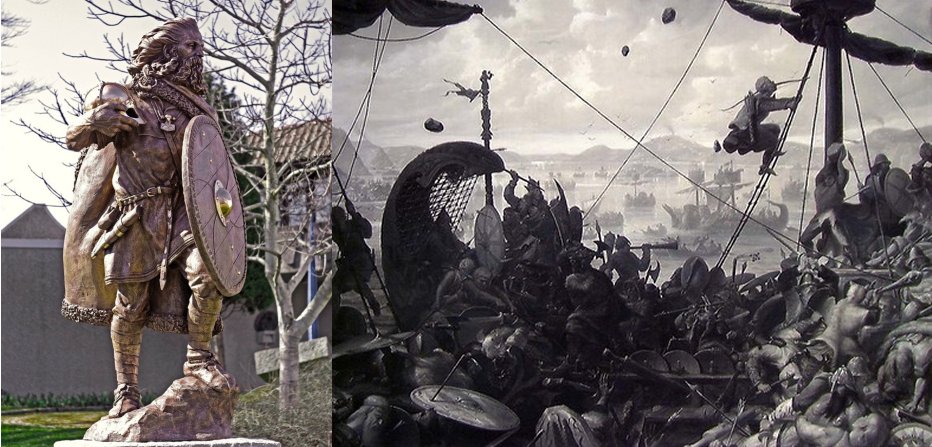Kylfings – Unknown Warriors Mentioned On Norse Runes – Were They Members Of The Varangian Guard?
Ellen Lloyd - AncientPages.com - Several Norse runes mention a group of unknown warriors named Kylfings. According to scholars, the Kylfings may have been members of the Varangian Guard, but who these people were and where they came from remains a historical mystery.
Left: Norway's first king Harald Fairhair. Credit: Public Domain - Right: Battle of Hafrsfjord by Ole Peter Hansen Balling, 1870. Credit: Public Domain
Who Were The Kylfings?
From the late ninth century to the early twelfth century, the Kylfings were present in Northern Europe during the Viking Age.
They are mentioned in the Norse runestones, sagas, poems, Byzantine records, and Rus' law codes. The Kylfings obviously played an important role in many countries, but tracing these peoples' history has been difficult.
To begin with, we don't even know whether the term Kyfling refers to a particular tribe or is the name of a socio-political or economic group. Some scholars have suggested that the word kylfing was probably derived from Old Norwegian kylfa' club', which means 'man with a club.'
The Norslunda Runestone, bearing runic inscription U 419, mentions the personal name Kylfingr. Credit: Wikipedia
However, whether the Kylings were ethnically Finnic or Norse is still debated. They could have originated from Denmark, Sweden, or the Eastern Baltic.
The Kylfings And Their Battle Against Viking Chief Harald Fairhair
According to the Sagas, the Kylfings opposed the consolidation of Norway under the Viking chief Harald Fairhair.
The Kylfings participated in the great naval Battle of Hafrsfjord, sometimes between 872 and 900. When Harald Fairhair won the battle, the Kyflings started raids in Northern Norway and fought against King Harald Fairhair's warriors. The monument Sverd I Fjell – Swords In Rock, located just outside Stavanger, Norway, commemorates the Battle of Hafrsfjord.
Egil's Saga reveals that Kylfings were trading and plundering in Finnmark around 900. Thorolf Kveldulfsson, King Harald's tax agent in northern Norway, engaged Sami scouts to monitor the Kylfings' movements and report back to him. When Thorolf Kveldulfsson encountered the Kyflings, he killed all of them.
"Far and wide about Finmark did he travel; but when he reached the fells eastward, he heard that the Kylfings were come from the east and were there for trading with the Finns but in some places for plunder also.
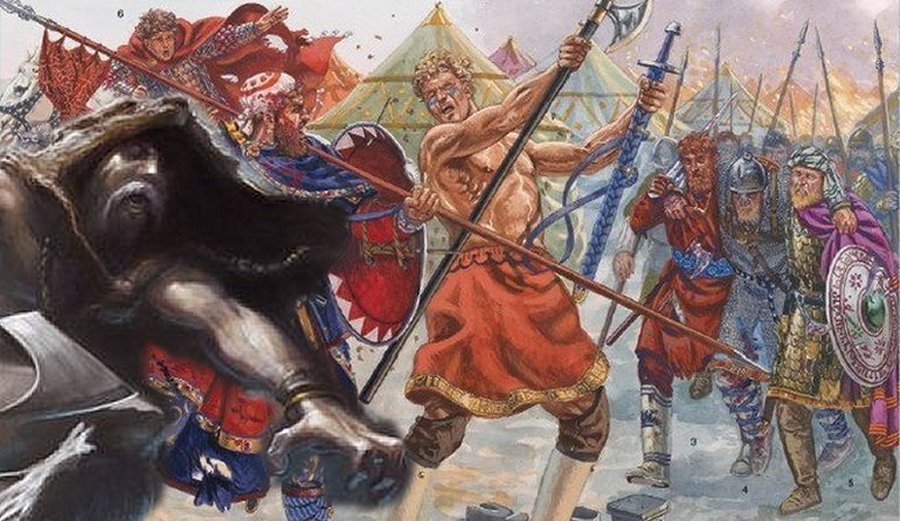 Roman Empire needed berserker warriors and hired them among northern mercenaries or in other places in Europe. Read more
Roman Empire needed berserker warriors and hired them among northern mercenaries or in other places in Europe. Read more
Thorolf set Finns to spy out the movements of the Kylfings, and he followed after to search for them and came upon thirty men in one den, all of whom he slew, letting none escape." (Egil's Saga, Chapter: Thorolf in Finmark)
Kyflings And The Varangian Guard
Historians have found evidence that the Kylings were also mentioned in connection with the Varangian Guard. The Varangian Guard represented the elite heavy infantry regiment of the Roman ('Byzantine') Empire from AD 988 AD to around 1404 AD. and consisted of professional Viking warriors who successfully conquered territories.
However, whether the Kyflings actually served as a unit of the Byzantine army has not been historically proven.
Who these unknown warriors were and where they came from is still a controversial subject. One theory proposed they were a Finnic tribe or West Slavic people. Still, many have also suggested that the Kylfings were from East Scandinavia, possibly Swedish tribe, or originated from eastern Baltic and northern Russia.
Written by Ellen Lloyd – AncientPages.com
Updated on October 2, 2022
Copyright © AncientPages.com All rights reserved. This material may not be published, broadcast, rewritten or redistributed in whole or part without the express written permission of AncientPages.com
Expand for referencesSaga Och Sed: Kungl. Gustav Adolfs Akademiens Årsbok
P. Sture Ureland, Iain Clarkson - Scandinavian Language Contacts
Egil's Saga
More From Ancient Pages
-
 Ancient Bayanihan Tradition Of The Filipino People: Villagers Move Your Entire House Including Walls And Roof
Ancient Traditions And Customs | Sep 6, 2018
Ancient Bayanihan Tradition Of The Filipino People: Villagers Move Your Entire House Including Walls And Roof
Ancient Traditions And Customs | Sep 6, 2018 -
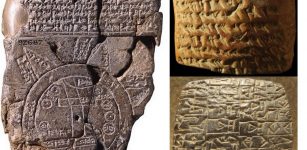 Cuneiform Tablets: One Of The Earliest Systems Of Writing Invented By The Sumerians
Civilizations | May 8, 2017
Cuneiform Tablets: One Of The Earliest Systems Of Writing Invented By The Sumerians
Civilizations | May 8, 2017 -
 3.2 Million-Year-Old ‘Lucy’ Could Walk On Two Legs – First Hominin Muscle Reconstruction
Archaeology | Jun 20, 2023
3.2 Million-Year-Old ‘Lucy’ Could Walk On Two Legs – First Hominin Muscle Reconstruction
Archaeology | Jun 20, 2023 -
 Unique Miniature Roman Gold Lock Smaller Than A One-Euro Coin Discovered In Germany
Archaeology | Jan 31, 2025
Unique Miniature Roman Gold Lock Smaller Than A One-Euro Coin Discovered In Germany
Archaeology | Jan 31, 2025 -
 Ancient Artifacts With Puzzling Signs Found In North America May Be Evidence Of A Lost Civilization Or Unknown Native American Tribe
Featured Stories | Feb 4, 2025
Ancient Artifacts With Puzzling Signs Found In North America May Be Evidence Of A Lost Civilization Or Unknown Native American Tribe
Featured Stories | Feb 4, 2025 -
 Ancient Mediterranean Mystery In The Himalayas Puzzles Archaeologists – Can DNA Or Legends Solve The Riddle?
Featured Stories | Sep 24, 2024
Ancient Mediterranean Mystery In The Himalayas Puzzles Archaeologists – Can DNA Or Legends Solve The Riddle?
Featured Stories | Sep 24, 2024 -
 Mysterious, Well-Preserved Ancient Foreign Mummies Found On Remote Islands In North America
Featured Stories | Jan 5, 2025
Mysterious, Well-Preserved Ancient Foreign Mummies Found On Remote Islands In North America
Featured Stories | Jan 5, 2025 -
 Discovery Of Chromosomes Offers Evidence Of Ancient Humans Living In South America Over 18,000 Years Ago
Archaeology | Aug 21, 2022
Discovery Of Chromosomes Offers Evidence Of Ancient Humans Living In South America Over 18,000 Years Ago
Archaeology | Aug 21, 2022 -
 Mysterious Hornet Spook Light In Missouri
Featured Stories | Jun 26, 2024
Mysterious Hornet Spook Light In Missouri
Featured Stories | Jun 26, 2024 -
 Fearsome Koa Warriors Fought For Spiritual Energy And Mana, The Life-Force
Featured Stories | Jul 22, 2019
Fearsome Koa Warriors Fought For Spiritual Energy And Mana, The Life-Force
Featured Stories | Jul 22, 2019 -
 Proof Of Superior Ancient Technology – Found In All Four Corners Of The World
Ancient Mysteries | Mar 19, 2014
Proof Of Superior Ancient Technology – Found In All Four Corners Of The World
Ancient Mysteries | Mar 19, 2014 -
 Zep Tepi – When Gods Established Their Kingdom On Earth In Egypt
Featured Stories | May 23, 2021
Zep Tepi – When Gods Established Their Kingdom On Earth In Egypt
Featured Stories | May 23, 2021 -
 On This Day In History: The Great Fire Of London – On July 10, 1212
News | Jul 10, 2016
On This Day In History: The Great Fire Of London – On July 10, 1212
News | Jul 10, 2016 -
 Mysterious Pyramid-Shaped Tomb Discovered In China
Archaeology | Mar 15, 2017
Mysterious Pyramid-Shaped Tomb Discovered In China
Archaeology | Mar 15, 2017 -
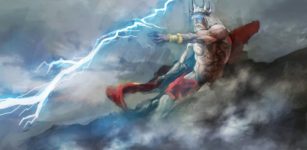 Zeus – ‘Cloud Collector’, God Of Order, Law And Justice – Most Powerful God Of Olympian Pantheon
Featured Stories | Jan 3, 2019
Zeus – ‘Cloud Collector’, God Of Order, Law And Justice – Most Powerful God Of Olympian Pantheon
Featured Stories | Jan 3, 2019 -
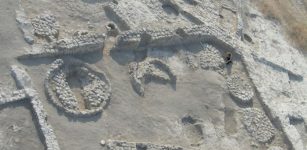 Olive Trees Were First Domesticated 7,000 Years Ago In The Jordan Valley
Archaeology | Jun 17, 2022
Olive Trees Were First Domesticated 7,000 Years Ago In The Jordan Valley
Archaeology | Jun 17, 2022 -
 Mnemosyne: Powerful Greek Goddess Of Memory, Bridge Between The Past And The Future
Featured Stories | Aug 2, 2021
Mnemosyne: Powerful Greek Goddess Of Memory, Bridge Between The Past And The Future
Featured Stories | Aug 2, 2021 -
 Sinister Mythical Dark Elves And Light Elves And Their Magical Ship ‘Skidbladnir’
Featured Stories | Oct 3, 2016
Sinister Mythical Dark Elves And Light Elves And Their Magical Ship ‘Skidbladnir’
Featured Stories | Oct 3, 2016 -
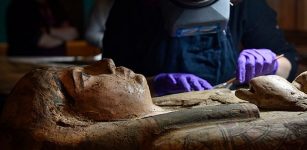 Never-Before-Seen 3,000-Year-Old Paintings Of Egyptian Goddess Amentet Discovered Inside Coffin Of A Mummy
News | Apr 7, 2020
Never-Before-Seen 3,000-Year-Old Paintings Of Egyptian Goddess Amentet Discovered Inside Coffin Of A Mummy
News | Apr 7, 2020 -
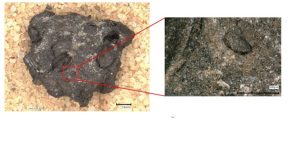 Millet Bread And Pulse Dough From Early Iron Age South India
Archaeology | Dec 20, 2021
Millet Bread And Pulse Dough From Early Iron Age South India
Archaeology | Dec 20, 2021

